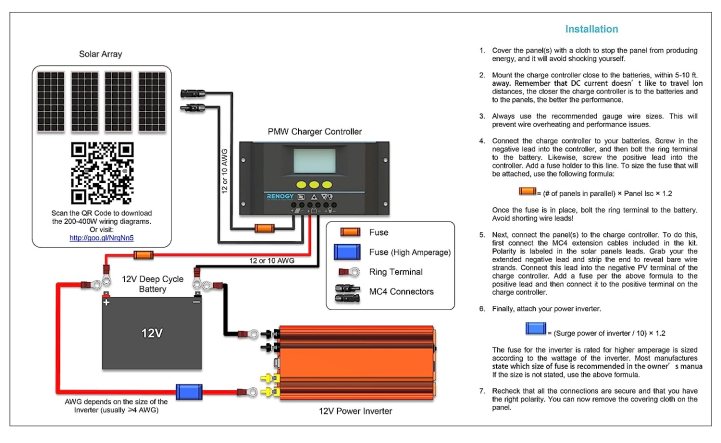king
Active member
John61CT said:Ammeter, clamp style is convenient, google for UT203 for a super cheap one. Also shows volts.
This one is $37
https://www.amazon.com/Digital-Clam...&qid=1527090351&sr=1-1-catcorr&keywords=UT203

John61CT said:Ammeter, clamp style is convenient, google for UT203 for a super cheap one. Also shows volts.
John61CT said:Isolator, as with combiner, can imply old diode-based tech, not very precise terms.
VSR / ACR are more modern, two-way automatic joining based on voltage, any charge source.
A cheap ignition solenoid is enough if only using Alt charging.
DCDC charger when voltage needs modifying, more expensive often installed when not actually needed.
Blanch said:Have you considered a solar suitcase?
About $200 on Amazon and has the panels and controller built in to it.
I use a solar suitcase, it works great for me!
Sent from my iPhone using Tapatalk
king said:Do you have a link to the one you use? Or what brand is it and how long have you had it?
I am open to anything that works, but reading lots of negative reviews cause me to hesitate on shelling out that much money.


king said:https://www.amazon.com/gp/product/B076MQM7PW/ref=ox_sc_act_title_1?smid=A3QVDEV4FVUZNT&psc=1
This is the recommended controller, but this costs more than the solar panel, what is a cheaper option that is still high quality?
Thank you so much, this really helps me visualize how it will work! I'm on Amazon trying to figure out which battery and panel to buyHumbleBeginnings said:I would recommend a fuse block for your loads. It's an easy way to have a fuse on each individual device and makes connections easier rather than adding a bunch to the battery.
There are a couple ways to do it, but I would connect one positive and one negative from your load terminals on you solar controller to the fuse block (you need a fuse block with both pos and neg to do this, some are pos only) then connect your loads off that.
I've tried to modify your diagram to show how I would do it.
Trebor English said:I have:
https://www.amazon.com/gp/aw/d/B074TB6FS8/
It controls my solar charging and has two USB ports. The case is plastic. The display is LCD, can't be read in the dark. The instructions are a poor translation from something like Chinese. It has been in service for 2 years. Temperature compensation is manual, I set it to 14.4 in summer, 14.8 in winter. It is PWM. It has a low voltage disconnect output.
The one you have linked at 20 times the price is MPPT. It seems to have some way to know the battery is full so it can stop charging and do float mode.
Can you be specific about the product qualities that are important to you?
Yes, both Starter and House will get charge current whenever either source is active, or when charging from shore power as well.king said:So, for solar and alt charging, I should get a VSR?
That is a little pricey. So are a relay/VSR and a smart isolator the exact same thing?John61CT said:Yes, both Starter and House will get charge current whenever either source is active, or when charging from shore power as well.
Starter will hardly ever pull much, but good to have that topped up when you're long-term stationary.
Be sure to get a high enough amps rating for the max current that will go across that connection.
This is the best https://www.bluesea.com/products/7620/ML-ACR_Automatic_Charging_Relay_-_12V_DC_500A allows self-jumpstarting from House, but overkill if you're on a budget.
But wait until you've measured voltage output from your Alt, and the V drop from Alt to House, in case you need a DCDC charger.
Is there one you can recommend specifically? Or a brand?HumbleBeginnings said:I would recommend a fuse block for your loads.
I would advise sticking with Blue Sea, just go down in ampacity and feature set to get a lower price. You can find great deals on eBay too. Note that model is bulletproof, will last longer than any vehicle you install it inking said:That is a little pricey.
Depends on your needsking said:Is there one you can recommend specifically?
king said:Is there one you can recommend specifically? Or a brand?
HumbleBeginnings said:I would recommend a fuse block for your loads. It's an easy way to have a fuse on each individual device and makes connections easier rather than adding a bunch to the battery.
There are a couple ways to do it, but I would connect one positive and one negative from your load terminals on you solar controller to the fuse block (you need a fuse block with both pos and neg to do this, some are pos only) then connect your loads off that.
directly from the House battery, or its load buss nearby.tx2sturgis said:and provide adequate, fused power to the fuse panel seperately.
Enter your email address to join: